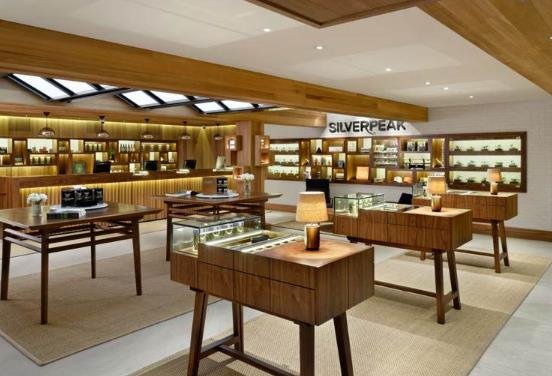By the time interior designer Kim Myles stepped into cannabis retail stores for her reality TV show High Design, many business owners were barely keeping their doors open.
Between sky-high taxes, licensing fees, and growing competition, dispensary owners found themselves struggling to stand out in oversaturated markets. “It’s expensive to brick-and-mortar,” Myles said, explaining that many retailers were worried about survival more than anything else.
Myles, who won HGTV’s Design Star, spoke with MJBizDaily about the biggest design mistakes cannabis retailers make, current industry trends, and why too much focus on technology could be hurting sales.
Design Mistakes That Drive Customers Away
Entrepreneurs often wear many hats. They bootstrap, DIY, and cut corners where they can—especially in design.
Myles sees it all the time: store owners think picking a paint color and throwing up some shelves is enough. But when design is treated as an afterthought, it shows.
- Customers notice when a store lacks thoughtfulness. If the space feels generic or uninviting, there’s little reason to return.
- Retail is about experience, not just transactions. A well-designed dispensary should make customers want to linger, explore, and engage.
- First impressions matter. Myles says customers can “choose their adventure”—luxury and comfort or a run-of-the-mill shop that feels like an afterthought.
“If I walk into a dispensary that looks like no effort was put into it, you will never see me back there,” Myles said.

What’s Trending in Cannabis Retail Design?
The cannabis industry has seen a shift toward personalization, but many dispensaries still follow the same formula:
- Black walls
- A green neon sign with some trendy phrase
- A fake topiary wall
Myles sees this everywhere. “A lot of dispensaries owned by entirely different people look the same,” she noted.
But a real shift is coming. She believes the future of dispensary design will mimic the hospitality industry. Think about your favorite bar—chances are, it’s not the generic airport bar at JFK. It has character, a vibe, and a sense of place.
That’s what dispensaries need to aim for: an identity.
Creating Connection When Products Are Behind Glass
Cannabis laws often require products to be locked up or kept behind a counter, making customer engagement more difficult. But good design can still make a difference.
Myles says successful dispensary owners use design strategically:
- Lighting and layout should guide the customer experience. What do you want to highlight? What do you want them to notice first?
- Branding matters. Packaging, colors, and signage should reinforce what makes the store unique.
- Don’t waste a captive audience. Customers who walk in are already interested—give them something worth looking at.
Are Digital Menus Helping or Hurting?
Digital menus have become standard in dispensaries, but Myles sees a big problem with how they’re used.
She often walks into stores where budtenders stand idly while customers are directed to stare at a screen instead of having a conversation.
“That feels like such a failure,” Myles said. “A wasted opportunity to build rapport, trust, and loyalty.”
She compared it to Apple stores. Yes, they have screens everywhere, but they also have employees engaging with customers, answering questions, and making sales.
Retailers who rely too much on screens miss out on a key revenue driver: human interaction.
Staff vs. Owners: Who Cares About What?
Design concerns often look different depending on who you ask.
For dispensary owners, the biggest headache is hiring and retaining great staff.
For employees, it’s often something much simpler: finding the product.
Many dispensaries pride themselves on carrying an extensive selection, sometimes with thousands of SKUs. But without smart organization, that variety becomes overwhelming—both for customers and staff.
Myles has seen employees struggle to locate products because of poor storage design. When a business boasts about its vast inventory but can’t find half of it, that’s a problem.
A well-thought-out store layout should work for both employees and customers.
